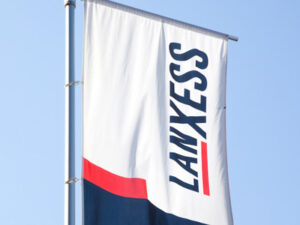LANXESS will be showcasing its additives for the rubber processing industry at the International Rubber Conference
Cologne, Germany – At the International Rubber Conference, which will take place in Nuremberg on June 27 to 30, 2022, the specialty chemicals company LANXESS will be showcasing its broad range of additives for the rubber processing industry (Hall 9, Stand 133). These will include pre-dispersed chemicals, processing promoters as well as vulcanization and filler activators. In the spirit of advancing sustainability, the focus will be on not only rubber production but also the manufacture of high-quality, long-lasting rubber products designed for a whole range of applications such as tires, hoses, seals, profiles, and drive belts.
The lifetime is an important indicator for the performance of rubber products. The S-SBR/BR–silica mixtures used in passenger car tires, for example, can cause the tread to start “post-vulcanizing” during its service life, leading to changes in the molecular network and gradual hardening. Additives such as Perkalink and Vulcuren from LANXESS allow tire manufacturers to develop and produce mixtures for tires designed to deliver ultra-high performance over their entire service life.
At 4:30 p.m. on day one of the conference, Dr. Hermann-Josef Weidenhaupt – a specialist in rubber additives at LANXESS – will hold a presentation entitled “Perkalink 900 – The Smart Solution for Sulfur and Peroxide Crosslinking”, in which he will explain the specific qualities of this anti-reversion agent in relation to cross-linking.
In sulfur-vulcanized mixtures, Perkalink 900 ensures long-lasting heat stability by forming new stable carbon–carbon bonds instead of sulfur bridges, which can potentially break down due to reversion processes during vulcanization or during the course of usage. It is used in many sulfur-vulcanized rubbers such as NR, IR, SBR, and BR or blends of these elastomers in order to achieve improved reversion resistance also at high-temperature vulcanization. This boosts productivity without compromising the material properties, a quality that is especially desirable for thick-walled rubber products.
When precursors are recovered from rubber products, the extreme heat in combination with the mechanical or chemical stress break up the polymer chains, leading to a significant deterioration in the mechanical properties.
This is why a special process is required during devulcanization in which only the sulfur bridges formed during vulcanization are destroyed. This is based on the lower binding energy of the S–S and C–S bridges (S = sulfur; C = carbon). The mechanical properties remain largely unaffected here. During devulcanization, it is important that not too many C–C bonds of the polymer backbone are broken. Steps must also be taken to prevent broken C–S and S–S bonds – i.e. radicals – from re-bonding with the sulfur contained in the mixture. The processing agent Aktiplast 79 is used in this final step, effectively blocking the radicals by reacting with them and, in turn, preventing the broken bond from reforming.
“As the world’s largest manufacturer of polymer- and silica-bound additives with more than 125 years of experience in the rubber industry, we not only offer our customers consistently high quality, but we can also ensure the availability of the additives, even in these currently very challenging times,” says Dr. Benjamin Bechem, head of global marketing for additives at LANXESS’ Rhein Chemie business unit.

